Highlights from 400 years
Read about iconic objects in our four permanent exhibitions about Gothenburg’s history.
Read about iconic objects in our four permanent exhibitions about Gothenburg’s history.
In the exhibition “The Birth of Gothenburg,” there is a trowel from the 17th century. It was found during an excavation in 1977 on Södra Hamngatan and attracted some attention. Because there is something special about a trowel from the very beginning of a city, right? It’s like a glimpse into the pioneering era itself. It is this trowel that built the city! Maybe.
That it was found precisely at Södra Hamngatan is also somewhat typical. The future city’s streets and blocks were measured out on the sandy meadows, and even then, the royal authority was concerned about the city’s appearance. It was decided that only stone houses could be built on the most public streets. On the semi-public ones, wooden houses with a stone front were sufficient. Wooden houses were allowed on the back streets. The most public space was along the Stora Hamnkanalen, so if there was anywhere masonry took place, it was here. Why one of the masons then dropped, forgot, or in some other way lost their trowel – we will never know.

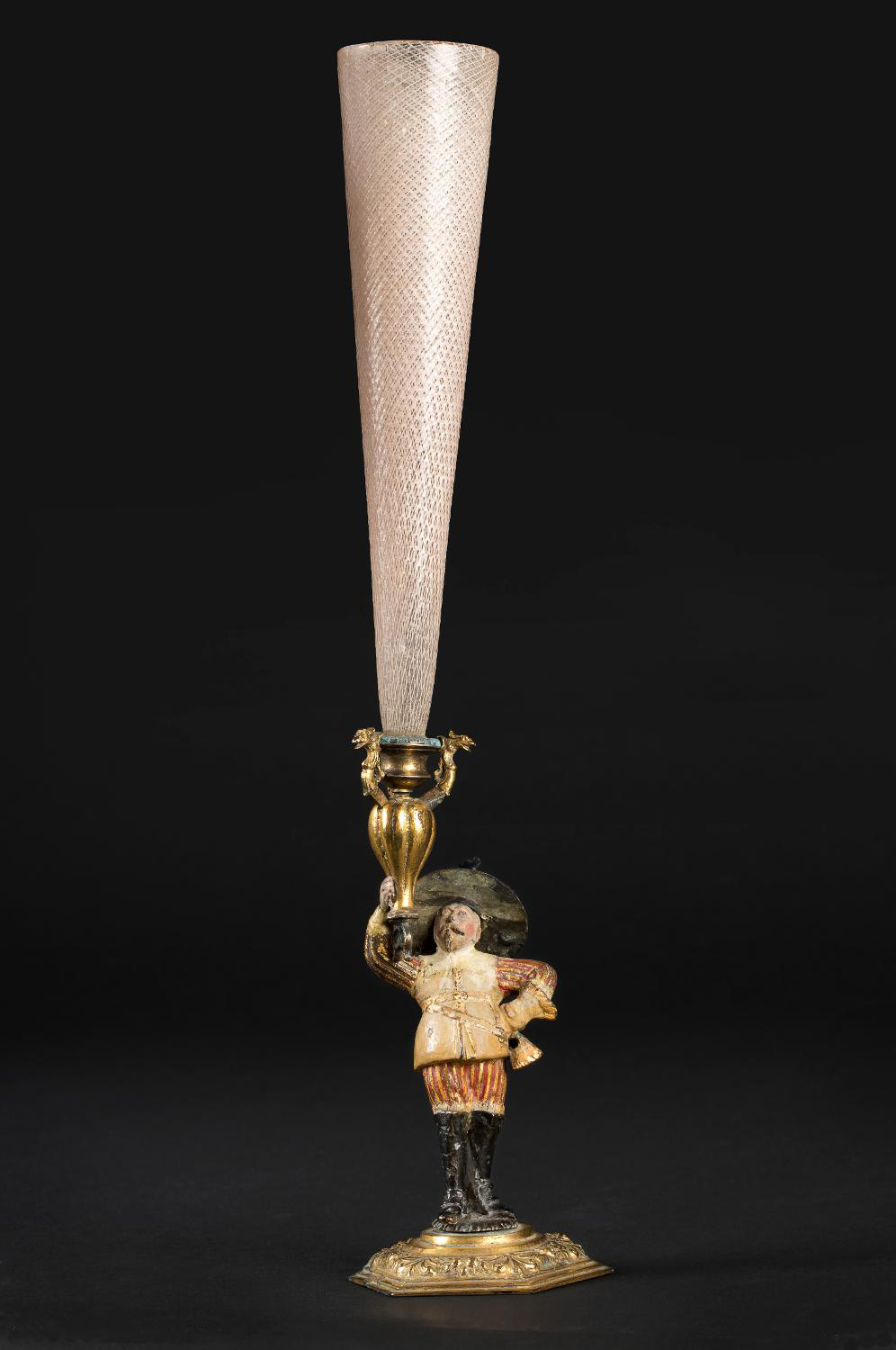
Merchandise is nothing new. In 1630, Gustav II Adolf, the founder of Gothenburg, landed in northern Germany. Sweden had entered the Thirty Years’ War and simultaneously launched a massive propaganda campaign. Flyers, newspapers, and engravings were pumped out, portraying the Swedish king as the defender of justice and true Christianity. This continued even after the king fell in battle in 1632. Now he became a martyr and an icon.
Among this royal merchandise were objects of all kinds, and one of them is this glass holder. A contemplative Gustav Adolf stands, raising the glass holder as if it were a goblet. If you lived in Germany and displayed such an item, it was a clear way to show where your sympathies lay. What makes the glass holder at the museum is that the original glass is still preserved.
Many objects in a museum’s collections are mysteries. Like this little figure, only 5 centimeters long. It was found in Tynnered in southern Gothenburg and appears to depict a small child in an egg-shaped bowl. The material is stone, and the child and bowl are carved from a single piece. So far, everything is good, but then come the questions. What does the little figure actually represent? What was it used for?
In the museum’s catalog, it is referred to as an amulet, even a fertility amulet, and categorized under Folk Medicine and Pregnancy. An amulet is associated with magic. It is an object that the wearer believes will protect against illness or misfortune and provide strength or luck. The interpretation is that the figure represents an unborn child in the womb. It was then worn by someone who wanted to conceive, as a kind of charm. That may be the case, but who knows for sure? Perhaps only the person who once owned this little figure.
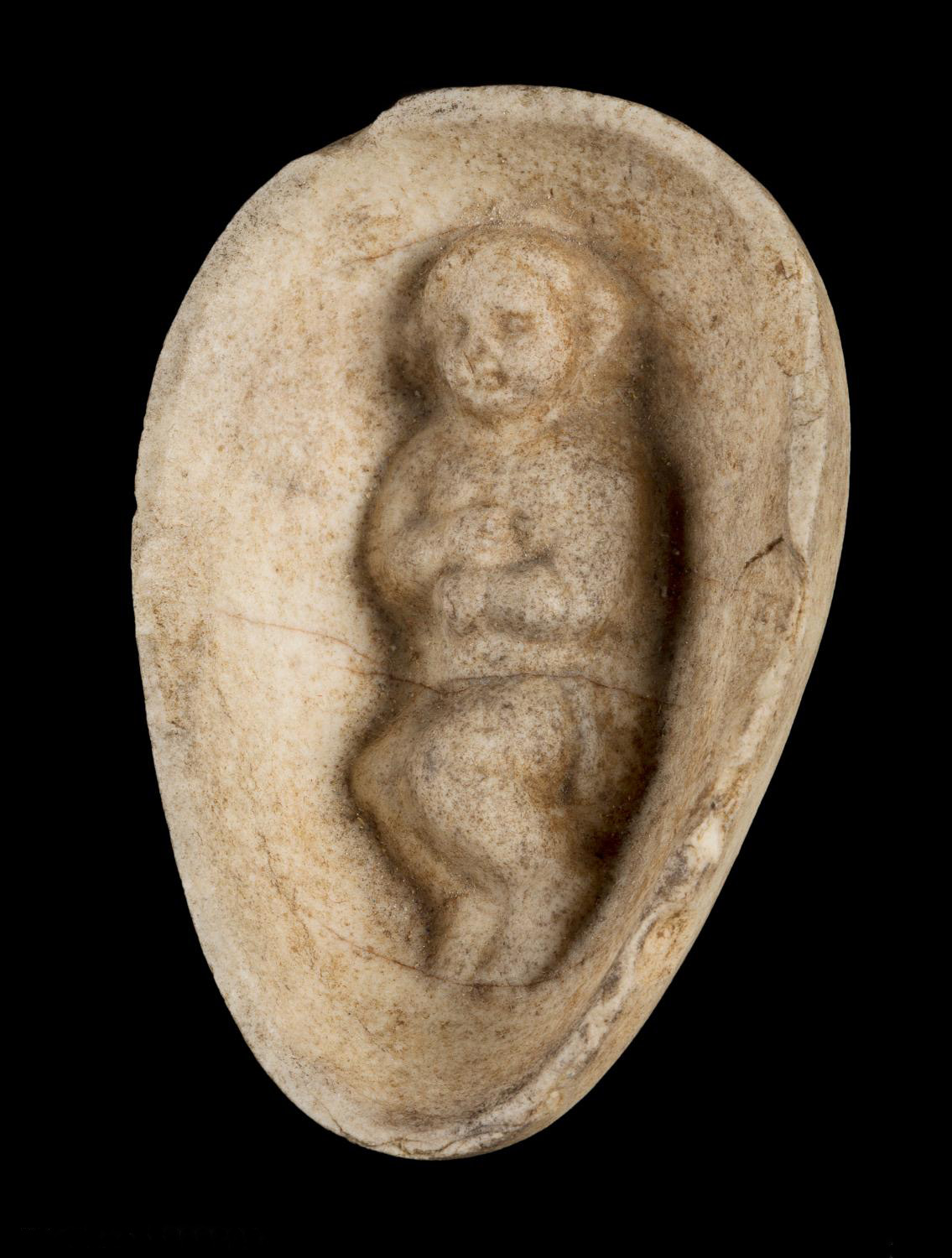
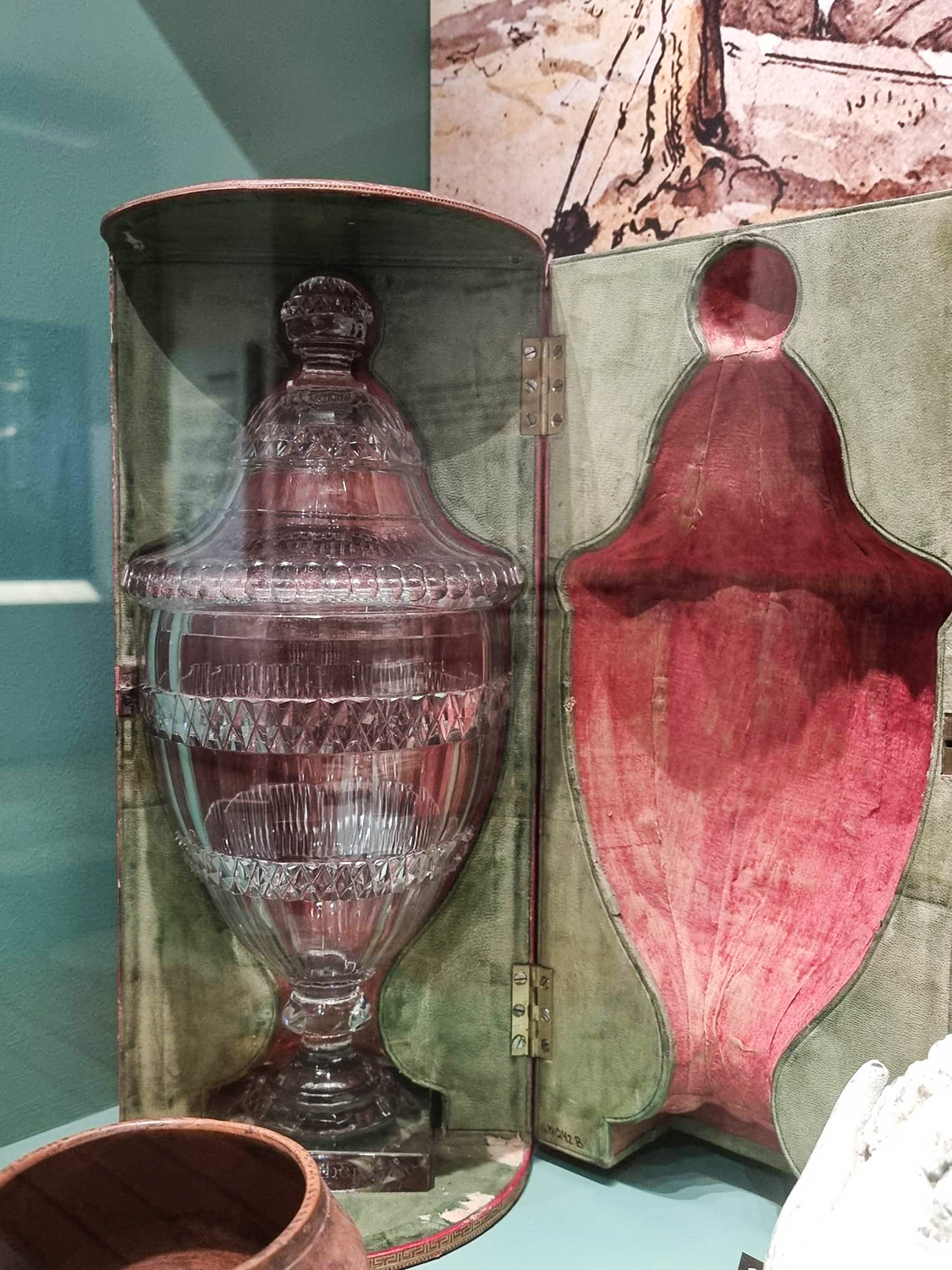
In the 18th-century exhibition at museum, there is a crystal chalice. On the base of the chalice, it reads: “To his most gracious king, Gustav’s spring nymphs.” A naiad is a water nymph in ancient mythology, so this is a story about water. Gothenburg was founded in a place without clean water, but a few kilometers south, there was the Kallebäck Spring. It was located high enough to provide natural pressure all the way to the city, but the problem was that no one wanted to bear the cost of laying a pipeline.
In 1785, some of the city’s merchants had enough and raised the necessary funds, and Gothenburg got its first water pipeline. In November 1787, King Gustav III visited the spring, which was then renamed Gustav’s Spring. It was also when the naiad appeared. She recited a poem and invited the king to drink from the crystal chalice. As a token of gratitude, she received a gold medal, but where it ended up and who had the dubious honor of dressing up as a naiad in the middle of winter, unfortunately, we have no idea.
In the 18th century, the men of Gothenburg smoked pipes. In the museum’s exhibition on 18th-century Gothenburg, there are several pipe heads, ranging from the simplest chalk pipes to luxurious ones made of porcelain and silver. But the people of Gothenburg not only smoked tobacco, they also cultivated it.
According to the economic theories of the 18th century, a country should export as much as possible and import as little as possible. The import of tobacco was a concern, so in the 1720s, all cities received a royal order to start cultivating tobacco. In Gothenburg, Jonas Alströmer invited a Dutch tobacco grower to teach the tricks of the trade, and soon tobacco began to grow around the entire city – in Stampen, Lorensberg, Burgården, and where Liseberg is located today. In 1750, almost 25 tons of tobacco leaves were harvested around Gothenburg.
However, this activity was entirely dependent on state support. When the government lost interest, the cultivation efforts dwindled, and by 1783, there were no longer any tobacco fields around Gothenburg.
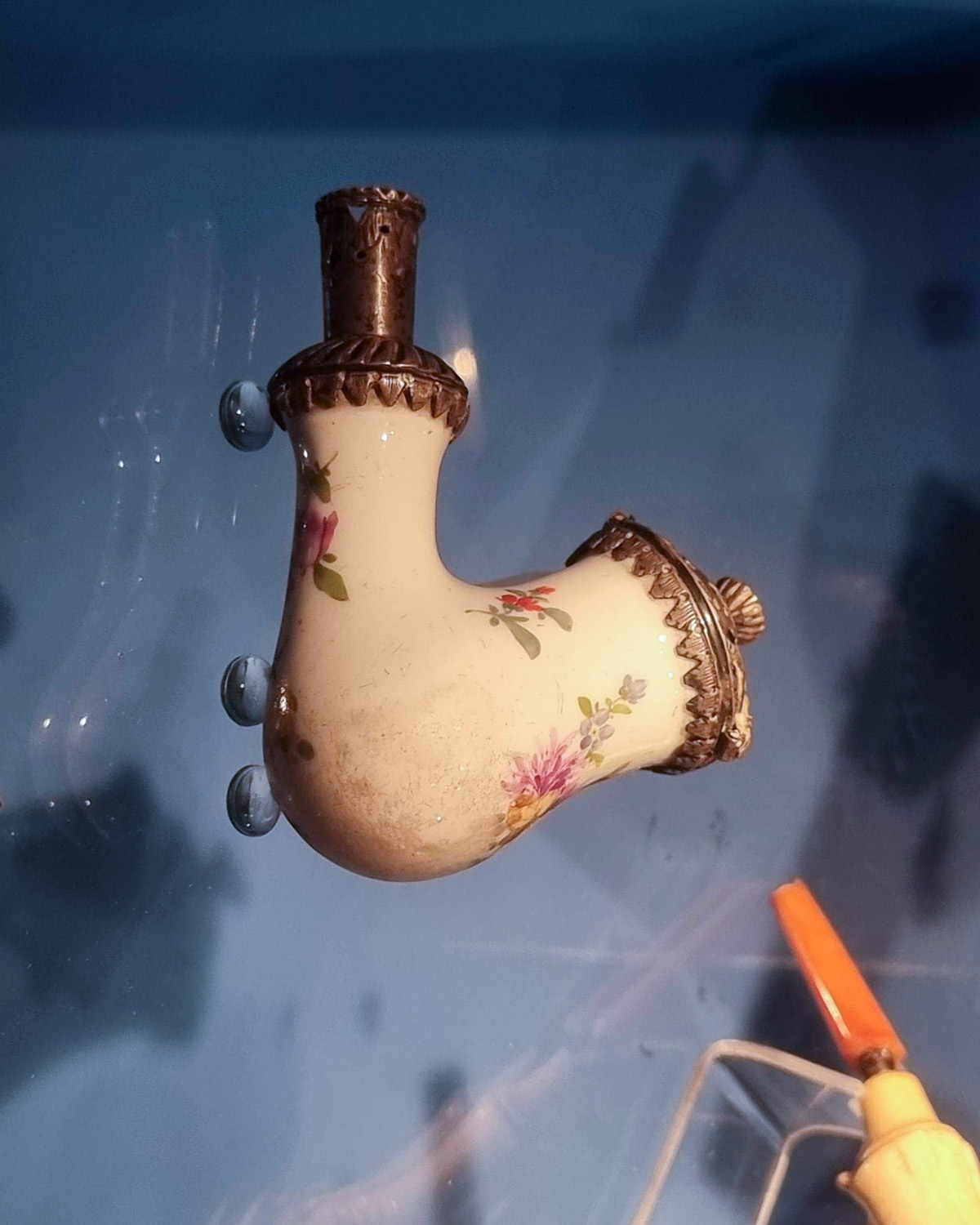
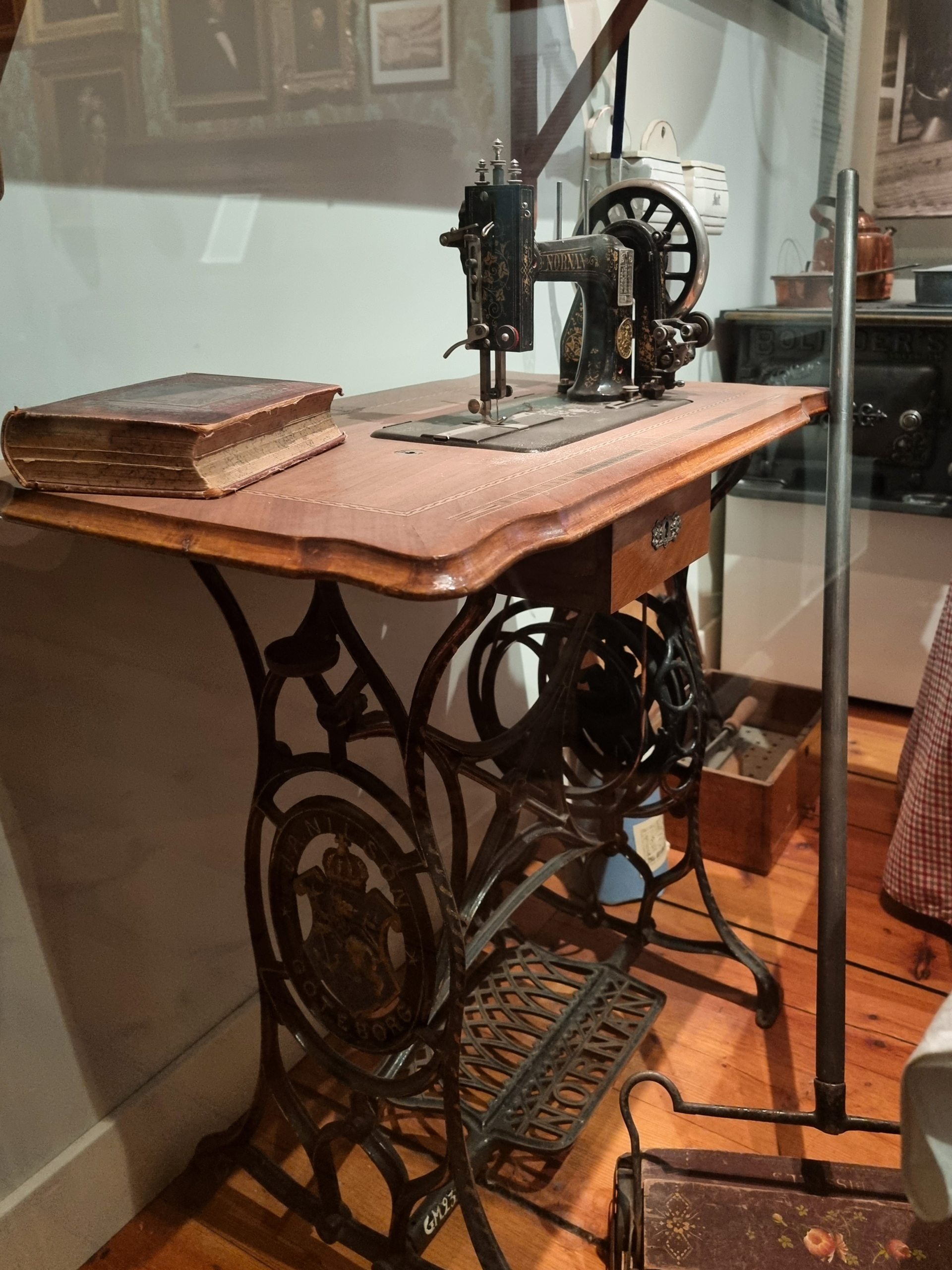
The 19th century is sometimes referred to as the century of inventions. We often think of “great” inventions like the steam engine, steam locomotive, or telegraph, but there were also things invented that made life easier in the home, especially for women. In the museums 19th-century exhibition, there is a sewing machine from the early 20th century. For millennia, people had been sewing by hand, but that was about to change.
The first patent for a functional sewing machine was taken out in France in 1830, but anxious tailors destroyed the machines, and the inventor was forced to flee. Instead, it was in the United States in the 1850s that the sewing machine for home use became popular. It was soon exported to Europe and copied. The museum’s machine is a brand called Norna, from Nornas Sewing Machine Co. located in Gothenburg, at the corner of Östra Hamngatan/Drottningtorget.
The company was founded as early as 1862 and was – at least according to their own advertising – Sweden’s oldest sewing machine company. Sewing machines were not the only modernity available there. Norna also sold velocipedes and soliphones, which were bicycles and horn gramophones.
In the museum’s 19th-century exhibition, there is a very special hat with two large holes in the brim. The hat is a horse hat and tells a story of a particular time, even a special summer. During the 19th century, Gothenburg was full of horses, which were sometimes treated quite poorly. Towards the end of the 19th century, attitudes slowly began to change. In 1891, the English novel “Black Beauty” was translated into Swedish under the title “Vackre Svarten.” In the book, a working horse tells its own story of life and suffering. The novel contributed to a debate about the conditions of horses.
In 1901, there was a record-breaking hot summer, with temperatures reaching up to 36 degrees. That’s when Gothenburg’s Nature Conservation Society introduced this horse hat and encouraged all drivers and others to acquire it to protect their animals. One entity that embraced the idea was Gothenburg’s tramways. For them, it was a last-minute decision since it was the final year that the trams were drawn by horses. The following year, the electric tram network was inaugurated. The horses were retired, and the horse hats ended up in the museum.
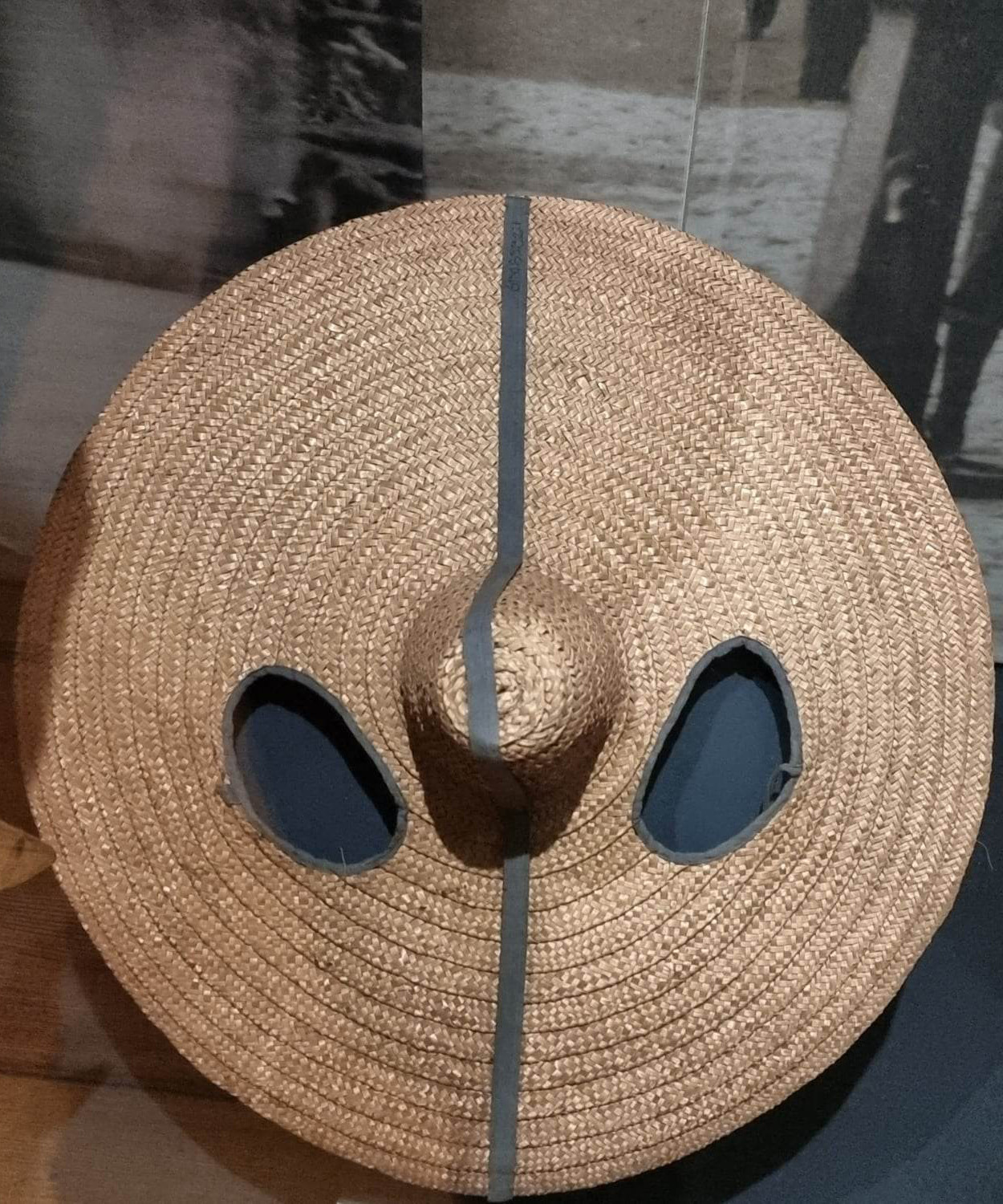
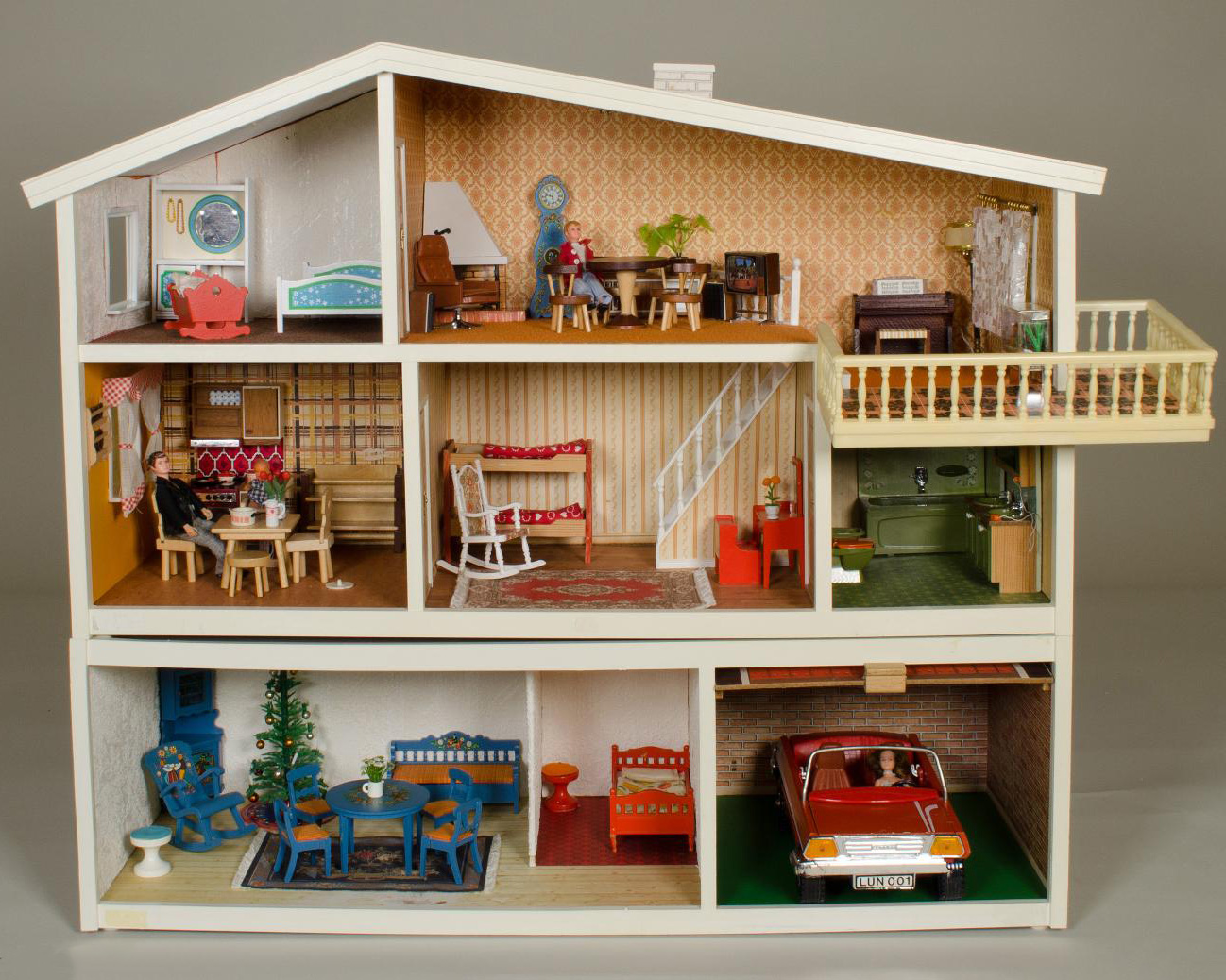
Sometimes something very small can be the beginning of something great. The story of Lundby dollhouses, for example, begins with a few homemade doll furniture pieces in a villa in Lundby. The person who made them was named Grete Thomsen, and they were for a sibling’s child. They turned out so well that she and her husband, Axel, decided to make more to see if they could be sold. They received their first order in 1947, and from there, things took off. They acquired a premises in Lerum, hired an interior designer, and designed a dollhouse.
In 1967, 35,000 dollhouses were manufactured in Lerum. Around 1980, Lundby reached its peak, producing around 100,000 dollhouses per year, manufacturing in eleven countries, and exporting to twenty. This particular dollhouse was purchased as a Christmas present in 1979. The recipient was Anna Maria, 3 ½ years old, who lived in Backa. For many years, it was a place for play, but children grow up, and eventually, the dollhouse was put away like so many others. How many Lundby dollhouses are actually stored in attics and basements around Sweden? Do you have one?
Some of the items at the Museum of Gothenburg have been present when history was being written. This banner was carried in Gothenburg on June 2, 1918. It was a time when Europe trembled with war and revolutions. Even in Sweden, demands for political reforms were being made. One of these demands concerned women’s suffrage. In 1918, no women in Sweden had the right to vote in the parliament, and they were also unable to be elected. Married women were considered legally incompetent, with their husbands acting as their legal guardians.
The demands for political rights for Swedish women were championed, among others, by the Gothenburg branch of the Women’s Political Suffrage Association (F.K.P.R.). Now, in the spring of 1918, the final stubborn opponents in the parliament were to be convinced, and one of the largest street demonstrations took place in Gothenburg. 6,000 people marched from Järntorget to Heden. Later that same year, the first decision was made that paved the way for universal and equal suffrage.
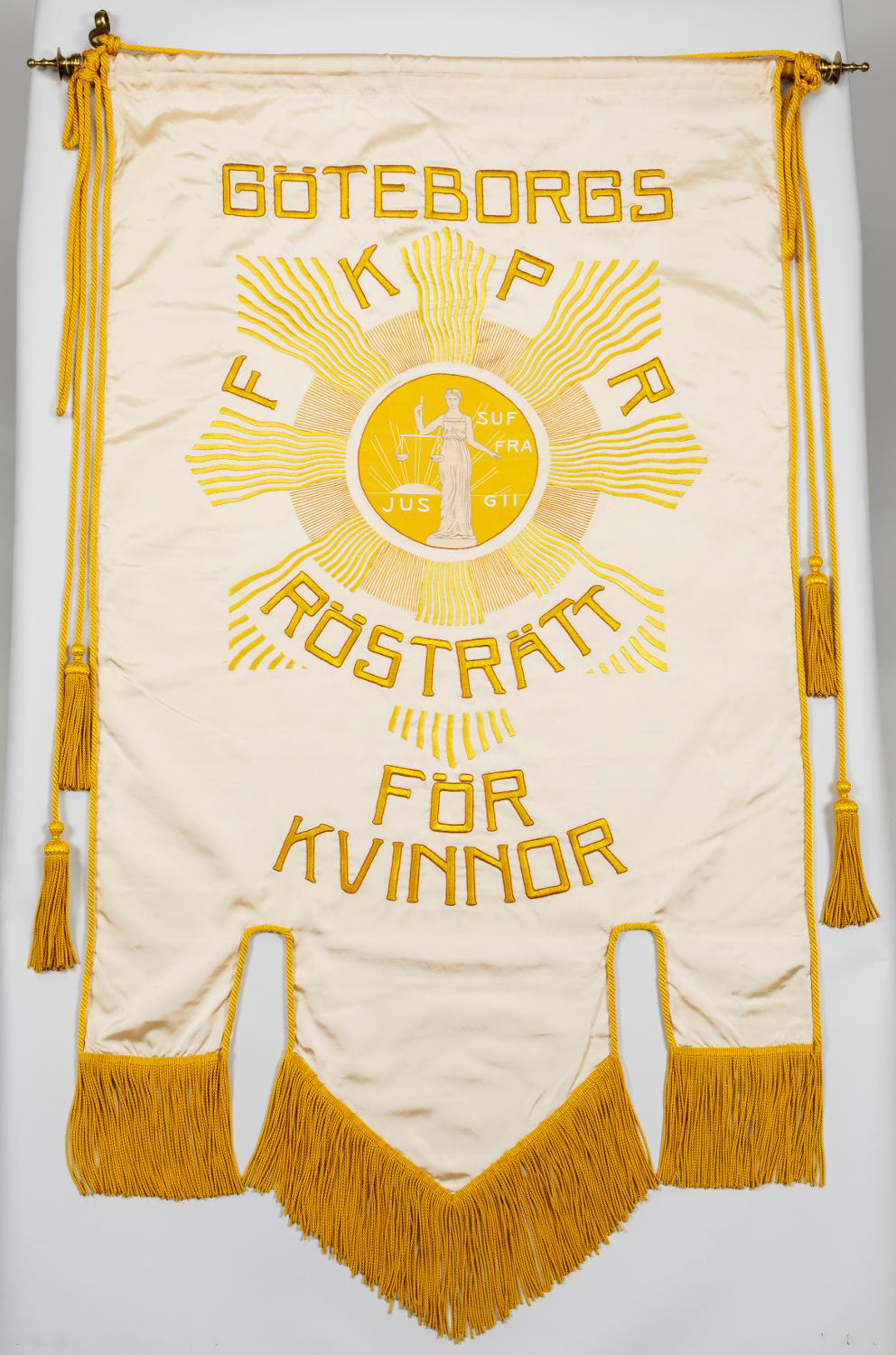
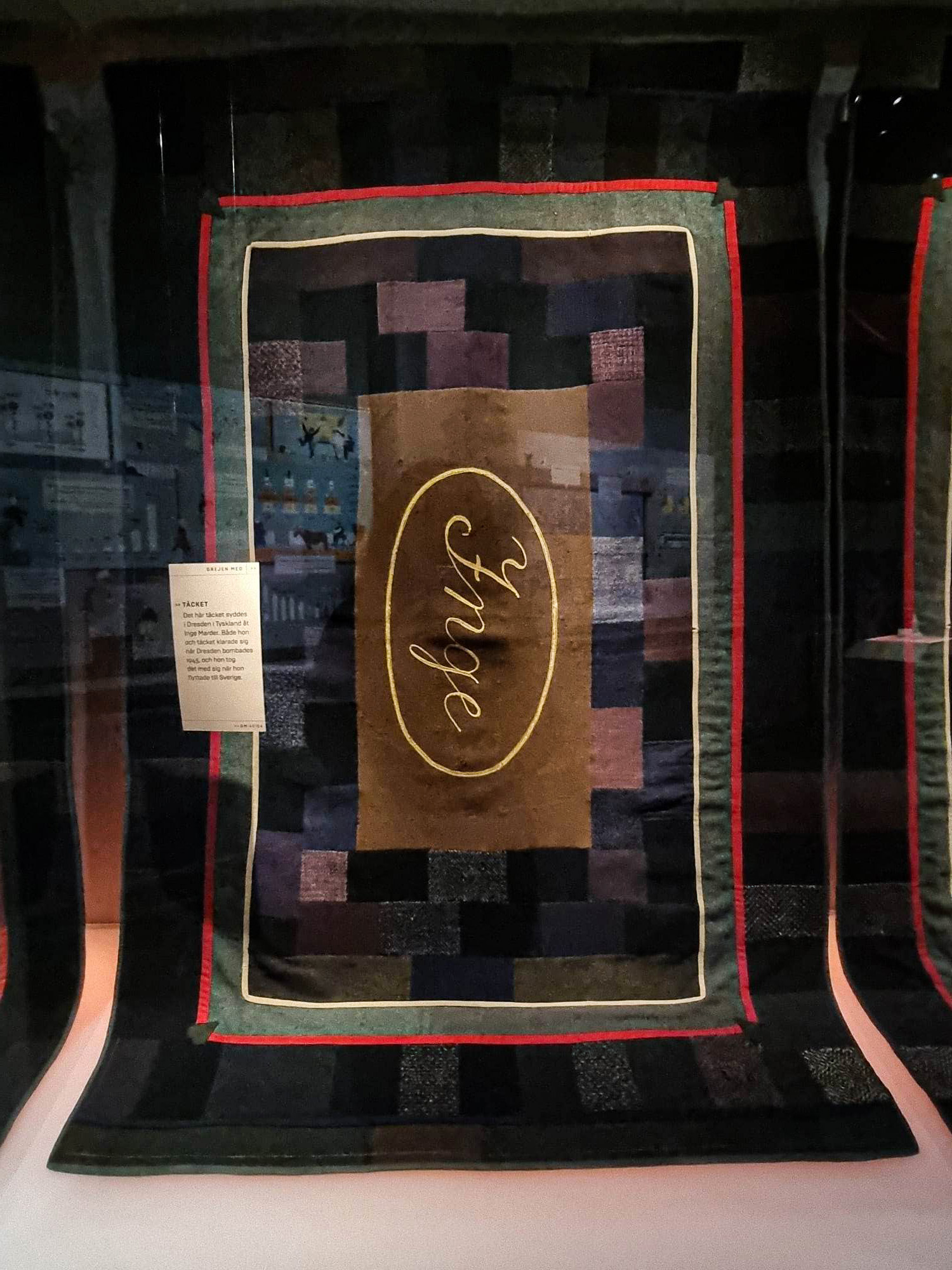
In 1931, a tailor sat in the German city of Dresden, sewing a quilt for his seven-year-old grandchild. The grandchild’s name was Ingeborg, but she was called Inge. Eight years later, World War II broke out. In 1945, Dresden was subjected to one of the war’s most devastating bombings, destroying the city and claiming the lives of at least 25,000 people. Among the survivors was 21-year-old Ingeborg.
Dresden was occupied by Russian troops, and when Ingeborg and her husband realized they had ended up in what would become a new dictatorship, they fled to Sweden. They arrived in Gothenburg, where Ingeborg worked at the Museum of Natural History. She brought her grandfather’s quilt with her, and in 1987, she donated it to the Museum of Gothenburg. Today, it hangs in the exhibition The Thing with Gothenburg, serving as an example of the dramatic events that have brought many people to Gothenburg.